Hydrilla identification and control
Information about the noxious weed hydrilla. Hydrilla is also known by its scientific name, Hydrilla verticillata.
About this weed
Hydrilla is a regulated Class A noxious weed. This means eradication is required state-wide.
Hydrilla is also on the Washington quarantine list, and it is illegal to buy, sell, or offer it for sale in the state.
Hydrilla is formally known as Hydrilla verticillata and it is in the frogbit family. Other common names for hydrilla include Florida elodea, water thyme, and Indian star-vine.
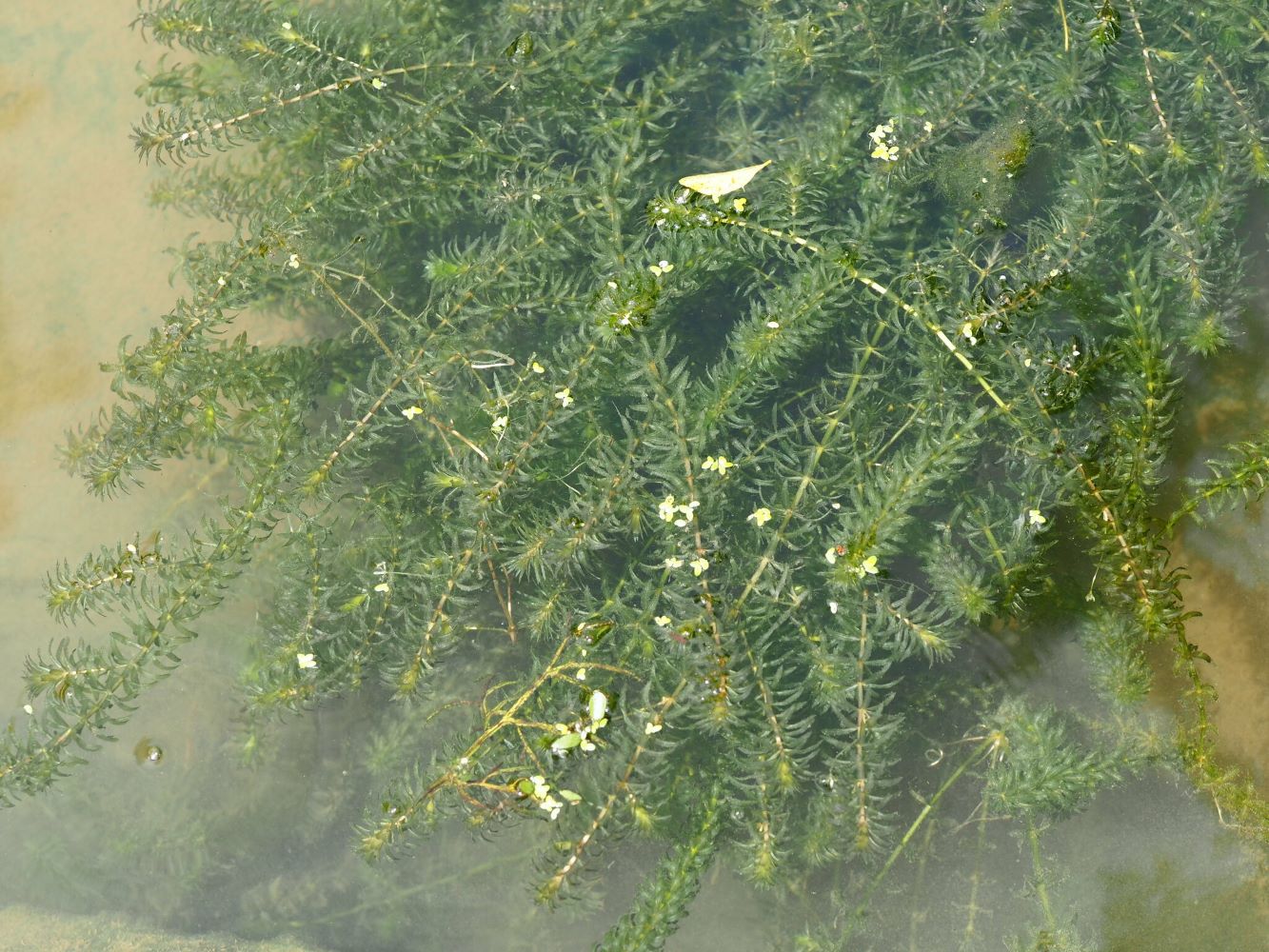
Why it's a noxious weed
Hydrilla can create dense underwater and topped-out vegetation. These areas of hydrilla crowd out native vegetation and reduce habitat for fish and other wildlife. Recreation such as fishing and swimming can be severely affected by the presence of hydrilla. In moving waters such as streams, rivers, and irrigation ditches, hydrilla can impede water flow. The plant quickly spreads into new areas within a waterbody once introduced. Hydrilla is considered one of the worst aquatic weeds in the United States. Hydrilla can even outcompete other invasive plants like Eurasian watermilfoil and egeria.
Currently, hydrilla is not known to occur in King County or Washington State, so any new occurrences of the plant would be of the upmost urgency. Hydrilla was found in one Washington state lake system (Pipe and Lucerne Lakes in King County) but was eradicated by the late 2000’s at the cost of hundreds of thousands of dollars.
Plant description
Hydrilla grows in freshwater areas of lakes, rivers, and other moving water. The plants are rooted to the bottom and can form dense areas of under-water and topped-out vegetation.
Leaves of the plant are toothed-looking, 1 to 4 mm wide and 2 to 25 mm long and grow in whorls/groups of 3-10 (more often 5).
Hydrilla have both male and female flowers that may be growing on the same or different plants. Flowers have 3 petals that float towards the surface, either translucent with white sepals (female) or white to red with red or brown sepals (male).
Plant stems root in the soil and grow up towards the surface water. Stem lengths of up to 30’ have been reported in Florida.
Hydrillas roots grow in the lake sediment to 20 cm deep. On the roots are reproductive structures called tubers (thickened underground part of a stem that stores nutrients, i.e., potato) and turions (small buds capable of growing into a full plant). This plant reproduces via stem and rhizome fragments, as well as vegetatively through rhizomes and stolons (horizontal plant stem that can take root and form new plants), seeds, tubers and turions.
Hydrilla is native to southeast Asia and Australia.
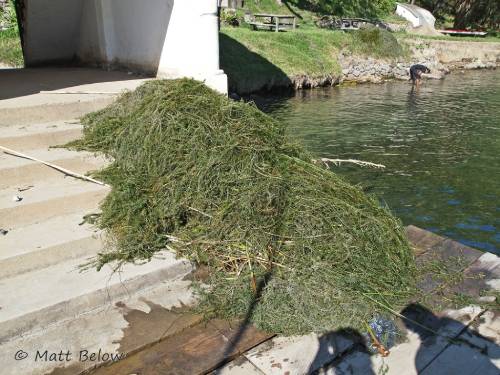
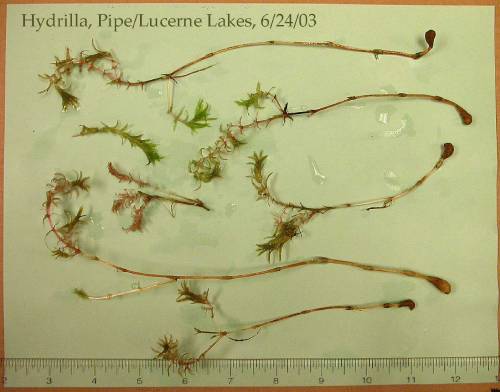
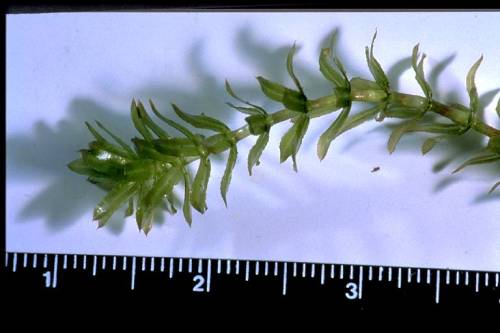
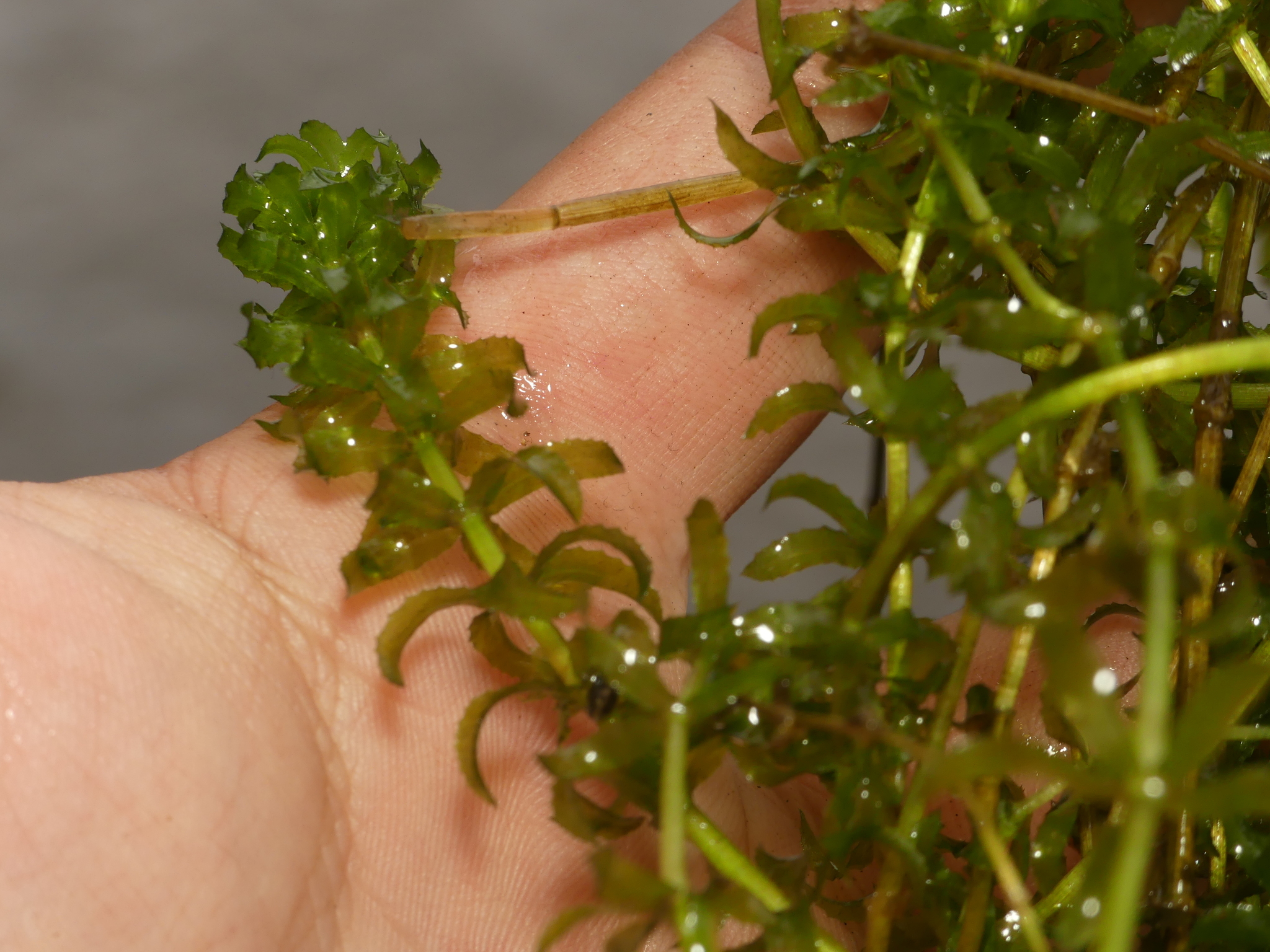
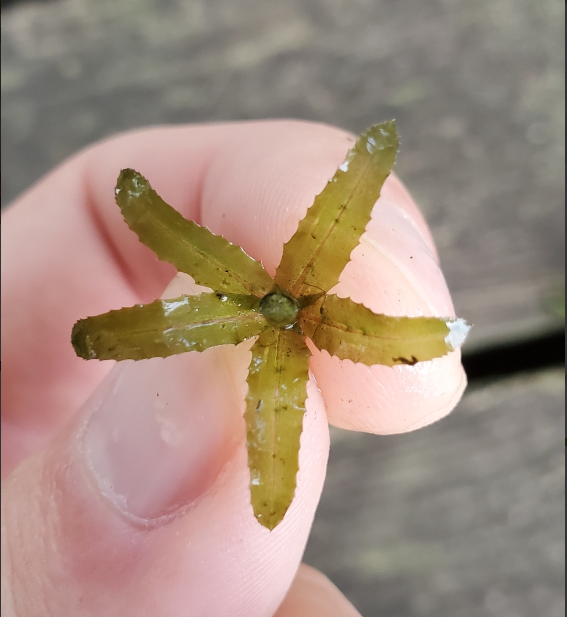
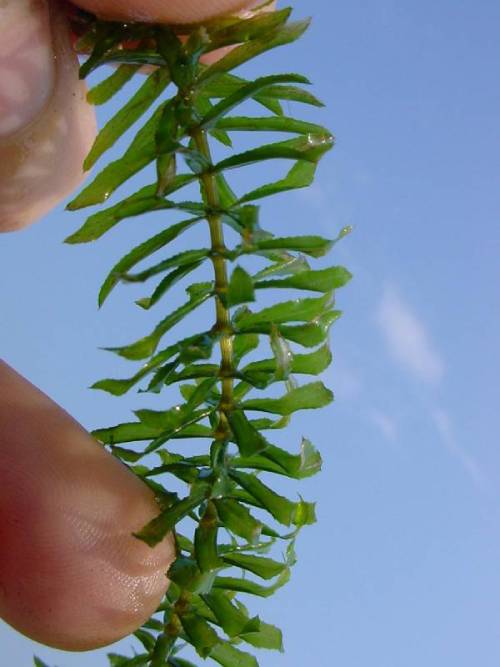
Be aware of look-alike plants
Hydrilla is often confused with:
Elodea or common waterweed (Elodea canadensis), is a native plant. Differences: elodea leaves are similar in size to hydrilla (1-2 cm long) but have smooth edges and grow in whorls of 3 (hydrilla is 5). It lacks tubers (sweet potato-like roots).
Egeria (Egeria densa), a regulated Class B noxious weed. Differences: egeria leaves are notably larger (up to 4 cm, hydrilla is 1-2 cm long) and have smooth edges and grow in whorls of 4-8 (hydrilla is 5). It lacks tubers (sweet potato-like roots).

Serrated edges, whorls of 5, and smaller leaves are key!
When in doubt, take photos and share them with us or report them on iNaturalist.
What to do if you find it
Property owners are required to control hydrilla on lands that they manage. Please notify us if you see hydrilla growing in King County. Our program staff can provide the property owner or appropriate public agency with site-specific advice on how best to remove it. We map all known locations of regulated noxious weeds such as hydrilla in order to help us and others locate new infestations in time to control them.
This plant is often distributed through movement of watercrafts and water related equipment. Make sure you inspect your watercraft at the boat launch before entry and after exit to avoid spreading any invasive or nuisance aquatic plants or animals. See King County’s boating information web page for more information.
Control methods
We recommend using a combination of methods to control noxious weeds. In areas with few weeds, it is important to act quickly before they become harder to control. Make a long-term plan as it often takes several years to get rid of most weeds. Start in the least infested areas first and then move into more heavily infested areas.
Hydrilla is very difficult to control. The plant can reproduce by plant fragments and seed. The entire plant and its roots must be removed or killed for control to be effective. Careful hand pulling by divers and/or a systemic herbicide application are needed to control and eradicate this plant.
Aquatic weeds grow in sensitive environments and their control, either by manual, mechanical, or chemical/herbicide methods, is carefully regulated by state and local level. Before beginning any aquatic weed control work make sure you are following all applicable regulations. Aquatic plant control that does not involve herbicide often requires a (free) permit. The rules and regulations for this type of removal will depend on your circumstance, please visit the WA Dept Fish and Wildlife for access to their Aquatic Plants & Fish Pamphlet and guidance on how to use it properly.
Prevention
Hydrilla may be sold as an aquarium or water garden plant so be sure to check the scientific name of all plants before purchasing them, especially through the internet where companies may not be aware of Washington state laws. Never dispose of unwanted aquatic plants in waterways. If you do spot this plant growing in a new place, be sure to quickly notify the King County Noxious Weed Program so action can be taken.
Manual control
Hydrilla can be hand-pulled. The entire plant plus its roots must be removed to be effective. Deep water work will require diving gear. This strategy works best on small infestations.
Chemical control
Stay safe when using herbicide:
- Always read the label before use.
- Wear a long-sleeved shirt, long pants, shoes, and eye protection.
- Follow state and local regulations.
The herbicides endothall and fluridone have shown to be effective on hydrilla, although multiple years of application are needed for complete control.
Avoid spraying where there is a chance that herbicide will enter a waterway or wetland unless you are using a state-approved aquatic herbicide and have the required permits and licenses to do so. Use of pesticides in water is regulated in Washington state. See Washington Department of Ecology Aquatic Pesticide Permits for details.
For more information or a site-specific recommendation in King County, contact the noxious weed program. For information in other locations, contact your local weed board or extension office.
Disposal instructions
Manual/mechanical removal is not recommended for large infestations. If you are only dealing with a few plants and manual removal is realistic, dispose of all plant parts in garbage.
Noxious Weed Disposal - Washington State Noxious Weed Control Board

 Translate
Translate